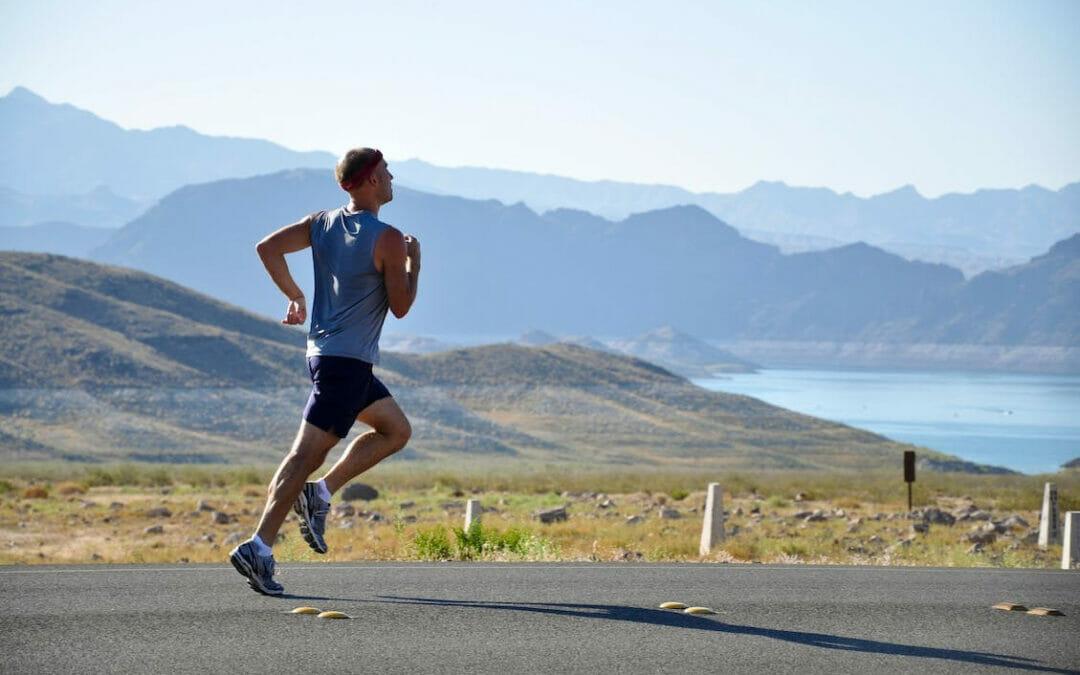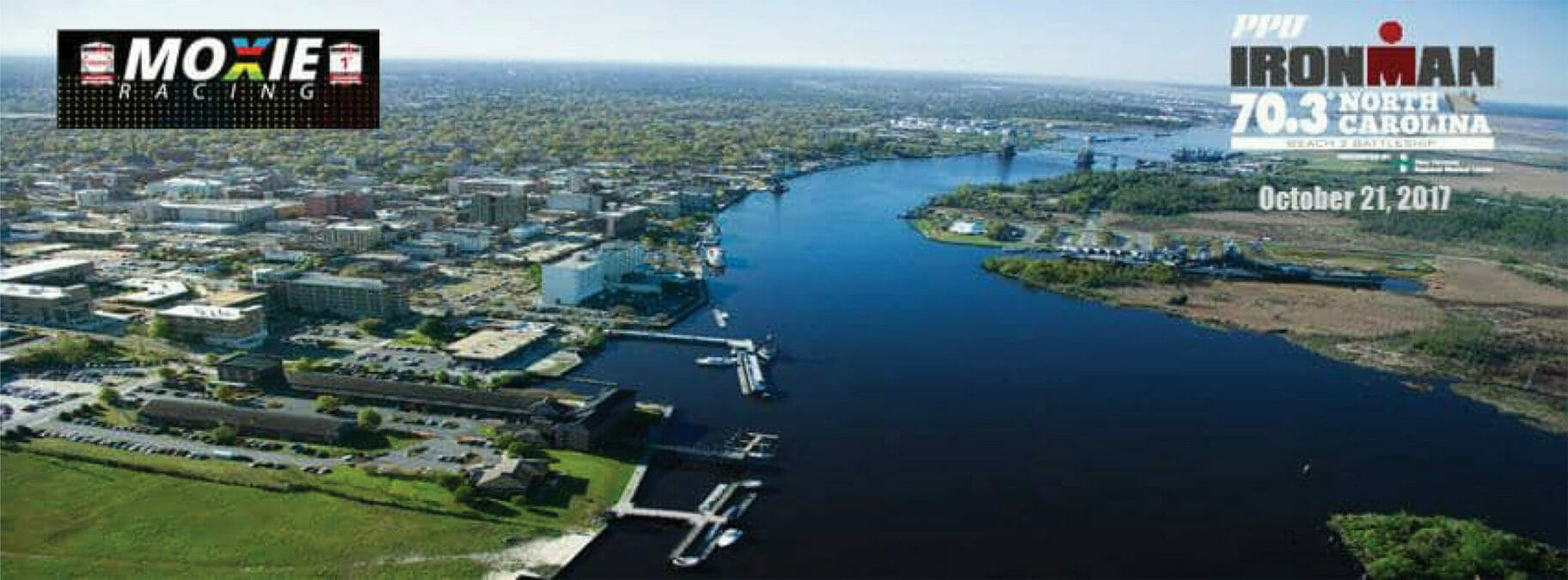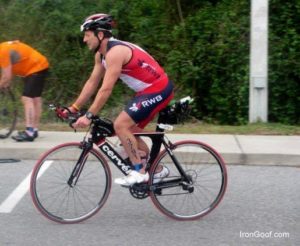
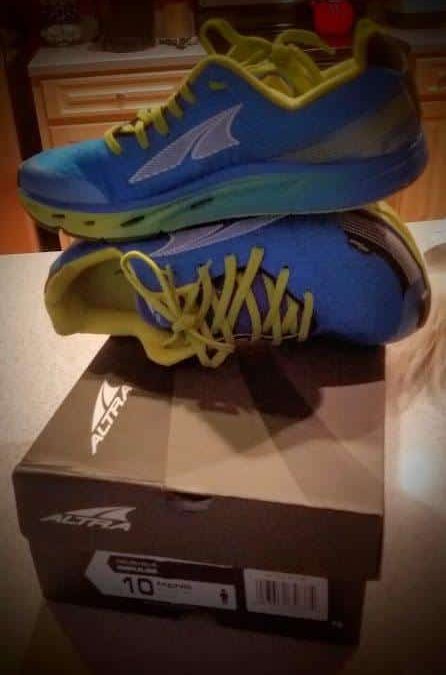
Goof Review: The Altra Impulse

Are you seeing a pattern yet? Yes, I am becoming a huge fan of the 6 year-old running shoe company known as Altra. As I have been instructing clients in form techniques, and have found that most of the models Altra manufactures, lend themselves to my favorite principles.
The Altra Impulse is no different.
What I like about the Altra Impulse
As with all of Altra’s models, my favorite advantage is their FootShape™ Toe Box. This is the incomparable wide toe box that Altra is known for. The toe box is makes any of Altra’s models recognizable from a good distance away. That is how wide it is. I enjoy the ability splay my toes and have my feet firmly hit the ground without them being cramped up. Wider toe boxes also allow the feet to develop more strength because the shoe is not tightening around the ball of the foot or the toes. The toes can move around, and tackle all kinds of terrain.
As you can see from the x-ray below, the amount of splay the toes are allowed in the Altra vs a traditional toe box. Imagine having access to the full splay of your foot while you run. What is amazing is that most runners do not even realize the limits that a traditional toe box causes. (Hmm, maybe there is an idea for a full post.)

The Altra Impulse is no different in this department. The FootShape™ toe box has been incorporated and has all the comforts of the other models I have run in.
I love the Zero Drop™ technology that Altra incorporates. When I run I have the ability  to utilize the full power and flexibility of my calf not to mention I can run as if I was barefoot, as our bodies were intended. Most traditional running shoes have a 12mm heel drop. This means that the heel is 12mm above the ball of the foot.
to utilize the full power and flexibility of my calf not to mention I can run as if I was barefoot, as our bodies were intended. Most traditional running shoes have a 12mm heel drop. This means that the heel is 12mm above the ball of the foot.
When we are barefoot, the heel and the ball of the foot are equal which is a Zero Drop™. This also helps with heel striking. Have you ever tried to heel strike while running barefoot? Even if you are a regular heel striker in shoes, it is almost impossible to heel strike while bare foot running. A huge effort has to be made to do that.
So, why runners continue to heel strike? If your heel is more cushioned in the shoe, then of course you will want to hit that area first. (Another post may be needed to explain a little more on this too…stay tuned.)
I love the Innerflex™ which are grooves at the bottom that create a more flexible sole.
One of the huge differences with the Altra Impulse is that they also incorporated their patented StabiliPod™ technology along side the Innerflex™. Now you have a stability shoe that is also somewhat flexible.
I have decided to put this feature as a liked feature more for others than myself. As a pure neutral runner I prefer to work allowing my body to support me, not my shoe, but Altra is marketing this shoe not only for running and triathlon, but for cross training as well.
The StabiliPod™ technology does really help in moving laterally, which is not something that is usual for runners, and especially those of us whom usually stick to the pavement. This is why I do like this feature.
 My absolute favorite feature of this shoe are the drainage holes in the sole. My very last test run with the impulse was an 8 mile run, immediately following a huge rain storm here in Tampa, Florida.
My absolute favorite feature of this shoe are the drainage holes in the sole. My very last test run with the impulse was an 8 mile run, immediately following a huge rain storm here in Tampa, Florida.
My route took me through numerous ankle deep puddles and while my socks remained damp, the shoe was clear of water within a few yards of the puddle. There was no squish from the sole of the shoe or my sock because as my foot pushed down on the shoe, the holes squeezed water out the holes. No more blisters from soaked uppers and water log socks release water as well.
The Altra Impulse also continues with Altra’s A-Bound™/EVA blend compound which sits directly under the foot and adds a return of energy and reduces ground impact.
The upper is a light material and does have a noticeable difference from the other models. The tongue and laces are curved with the shape of the shoe which differs from the straight tongue of traditional running shoes.

I actually enjoyed this new feature. The fit of the shoe felt more comfortable with the tongue falling in the same curve as my foot.
I rarely run without socks, but I did end up having to do go out for a couple of miles one day without socks, and they were extremely comfortable. While the upper is not seamless it is very close. There are only a couple of seems that surround the tongue, but they are covered with a light fabric that helps reduce any friction.
What I wasn’t so crazy about
This is probably a very individual issue, but even though I sized up to a 10 from a 9 and a-half, after a few miles my toes still ended up moving forward till I they hit the front of the shoe. This probably has to do with the fact that I only lace my shoes tight enough to lock in my heel.
If you like your shoes laced up tight this probably will not be an issue.
The price point for the Altra Impulse is $120 dollars, which while competitive in the market place it still is a little expensive. In this day and age where people are scrounging for liquidity, I really would like to see at least one company come out with a quality shoe that retails for under $80. Of course that is my opinion and my opinion only.
How did the Altra Impulse Rate?
Quality – 4/5
Upper – 5/5
Outsole – 5/5
Flexibility – 4/5
Comfort –5/5
Appearance – 4/5
Cost – 3/5
Overall – 4.2/5
Have you ever run in an Altra Running Shoe?
What were your experiences?
Which model do you like best?
Carpe Vitam!
(Seize Life!)
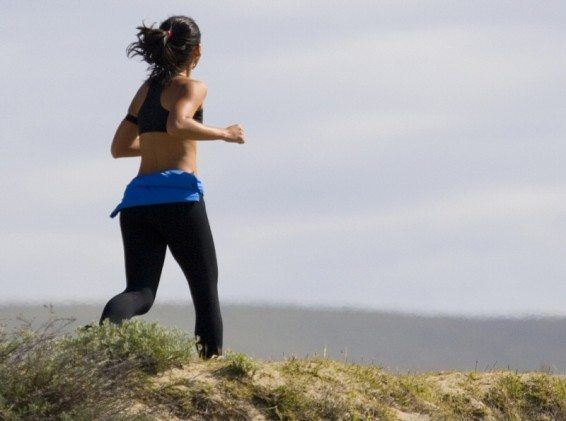
How to Run Faster by Running Slower
I can hear it now….”Know wonder they call you a Goof…you are crazy.”, “So, if I run slower I will get faster? You are out of your mind.” It was not to long ago I used to think the same thing, but as with everything I post, there are reasons and science to back it up.
Let’s face it, logic would dictate that pushing the pace of your easy days, as close to race pace as possible, would help you get fit faster and help you speed up, right? A lot of coaches, including myself, will tell you to run slow on your easy days, and easy days should be making up anywhere from 50-75% of your weekly mileage.
I have clients continuously asking me, “why are my easy days so slow?” The latest is my famous sit downs with my runners telling them to slow down after examining their data and finding them running tempo speeds during an easy day.
The answer to the question is what Arthur Lydiard and most other coaches would call the aerobic system. The aerobic system, or aerobic development, is the one of the most important fundamentals into unlocking your true potential.
Let us first check the stats on the energy contribution the aerobic system provides for races. As you can in the chart below, even the shorter events like the mile, over 80% of the energy required to run the race is produced via the aerobic system.
Aerobic System? What is it?
Aerobic training is the scientific fact that to move your body at higher intensities, the body needs to break down sugar and convert it to glycogen so it can be used as energy.
The aerobic system plus oxygen starts a chemical reaction known as Aerobic Glycolysis which continuously powers continuous endurance activities. In the aerobic system energy ATP is produced through Pyruvic Acid and Lipid/Protein fragments entering the Kreb Cycle and the Electron Transport Cycle.
Uh…what?
During aerobic respiration (yeah, that’s breathing) the body uses all the oxygen it needs to power the muscles. When you are running in your “aerobic zones” (easy runs), your muscles have enough oxygen to produce all the energy they need to perform.
See? Improving your capacity to transport and efficiently use all the available oxygen to produce energy will enable you to race faster since this makes up 85-99% of the energy needed to race.
Since running easy is aerobic development, what better way is there to train the aerobic system? There is none.
What goes on in the body during aerobic development?
Capillary development – capillaries are the smallest of the body’s blood vessels and they help deliver oxygen and nutrients to the muscle tissues while exporting waste products out. The larger the number of capillaries you have surrounding each muscle fiber, the faster you can transport oxygen and carbohydrates to your muscles.
Aerobic training (easy running) increases the number of capillaries per muscle fiber, thus improving how efficiently you can deliver oxygen and fuel to your working muscles and how quickly they can clear waste products.
Myoglobin Increase
Myoglobin is a protein in the muscles that binds the oxygen that enters the muscle fiber. When oxygen becomes limited during intense exercise, myoglobin releases oxygen to the mitochondria to produce more energy.
The more myoglobin you have in the fibers of your muscles, the more oxygen is transported under aerobic stress. Like, uh, during a race. Aerobic training increases the amount of myoglobin you have in your muscle fibers.
Mitochondria creation
Mitochondria are microscopic organelle found in your muscles cells that contribute to the production of ATP (energy). In the presence of oxygen, mitochondria breakdown carbohydrate, fat, and protein into usable energy.
Therefore, the more mitochondria you have, and the greater their density, the more energy you can generate during exercise, which will enable you to run faster and longer.
Aerobic training increases both the number and the size of the mitochondria in your muscle fibers.
Suffice it to say that aerobic development is the single most important factor to long-term development.
Of course, track workouts, VO2 max sessions, tempo runs and cross training will increase your fitness and are still incredibly important to racing faster. However, nothing will help improve continuously like developing the aerobic system.
Aerobic development is dependent upon running in your aerobic zones (for my runners Zones 1-3). This is why running faster on your easy days develop the aerobic system. Once you step out of those aerobic zones, on easy runs you diminish development of your aerobic system, but you also increase the chance for injury. Nope, two negatives do not make a positive in running.
This is one of the single biggest mistakes runners of all experiences make in their training.
As a coach and trainer I have always distinguished myself because I am always able to give my clients and readers the “why”. (Sometimes my clients end up telling me to just shut my mouth. when I am training with them because I am continuously telling them why they are doing each movement of an exercise or workout. I guess it may not be an advantage all the time. Go figure.)
Optimal Aerobic Development
Scientific research has been able to identify how the aerobic system adapts and responds to certain training paces. Physiologically we know:
- Capillary development appears to peak at between 60 and 75 percent of 5k pace.
- Maximum stimulation of myoglobin in Type I muscle fiber (Endurance Muscles) occurs at about 63-77 percent of VO2max. 63-77 percent of VO2max is about 55-75 percent of 5k pace.
- Two researchers, Holloszy (1967) and Dudley (1982) published some of the defining research on optimal distance and pace for mitochondrial development. In short, Holloszy found that maximum mitochondrial development when running at 50-75 percent of V02 max. Likewise, Dudley found that the best strategy for slow-twitch, mitochondria enhancement was running for 90 minutes per outing at 70 to 75 per cent V02 max.
It is pretty clear now right? Your optimal easy run pace for aerobic development is between 55 and 75 percent of your 5k pace, with the average pace being about 65 percent.
It’s also evident that running faster than 75% of your 5k pace on your long run has very little additional physiological benefit.
In fact, the research indicates that it would be just as advantageous to run slower as it would be to run faster. Running around half of your 5k pace is pretty easy right? Wouldn’t you know it, the evidence is clear that it still provides near optimal aerobic development.
Feel free to let me hear your feedback. I welcome any other case studies, personal experiences and other research as I am always learning. I provide you with the best content I can, but I have an open-mind and know that there may be other research out there that may negate information I post.
Carpe Vitam!
~IronGoof

The Ultimate Guide to Compression
It has been a while, and I have a ton of ideas that I am anxiously awaiting to share with you. Unfortunately, time has been getting away from me. Between training myself, a full-time job and being at capacity with 15 individual clients I am struggling for time to post. I promise I will figure out a way to make time. I am so lucky to have such great people to bounce ideas off of, that sometimes, by not posting, I feel like I am letting all of you down, so I promise to post more even if the posts end up being a lot shorter than usual. (Which the length is probably not your favorite part of it anyway. I know I ramble.)
Before I get into the nitty-gritty of my personal opinion of compression, a disclaimer.
I am not a medical professional. The opinions that are shared on this post come from research, my own experiences and the experiences of athletes I have personally witnessed and information I have researched. Every athlete/person has a different body and some products and/or methodologies may be advantageous for some and may even be dangerous for others. This post deals with my beliefs and my research. (Was that clear?)
Lately, most of the questions from other athletes, including clients of mine, have asked about compression. This usually centers around calf sleeves, but does include some of the other compression apparel as well. My answer is usually, for recovery and for temporary use they are great, but not for training. Why? Great question.
I am going to use calf sleeves as my example.

While running, biking, swimming or any major activity using the legs, the muscles are constantly in motion. That motion is what naturally makes the muscles stronger. The muscle moves and is loaded with either more repetitions, or with weight. The full range of motion of each muscle is imperative to the strengthening of the muscle. Compression holds that muscle in place and limits the movement therefore limiting the range of motion. While compressed the muscle cannot fully develop while training. Let’s take a look at the anatomy of the lower leg in the running position.


As you can see the gastrocnemius muscle and Achilles tendon, when the knee is flexed, both constrict and then elongate when the knee straightens. Here is the epitome of the range of motion naturally occurring when running. The more flexion and constriction that take place the more they are stretched causing the breakdown of the fibers. After the recovery period the fibers wrap tighter and in more abundance aiding in a strength and endurance. Now imagine that gastrocnemius muscle remaining constricted due to a calf sleeve. It seems to me that this would dictate that it would not have full range of motion also causing the Achilles tendon to remain stretched without the full ability to absorb the impact. This could unintentionally damage the Achilles tendon, the gastronemius muscle and the soleus muscle. If not damage, it will limit the ability to be strengthened. This is why I personally do not recommend calf sleeves during training workouts.
Recovery
I do however do not mind wearing compression while in recovery to include immediately following the cool down of a workout. I mentioned the healing of the fibers earlier. In order for the fibers to heal and become stronger after the breakdown, blood must be pumped through the muscle and with it water for hydration. Compression does help to isolate that area helping to keep the majority of the blood and water being pumped through the body to the point of the compression. With the legs either elevated or even walking around and at that point limiting the movement, it would allow for the blood to pool in that area helping to re-hydrate the muscle thereby helping to heal faster. In turn, an occasional training run or race, with compression at the tail end of an injury, might also benefit, but in a very limited quantity, and duration.
Carpe Vitam!
–IronGoof

Goof Race Recap – HITS Ocala
HITS is a fairly new triathlon series, with a unique concept. Their tag line is “A distance for everyone”, which really says it all. A HITS weekend consists of 70.3 (half-iron distance) and a 140.6(full-iron distance) on Saturday, and on Sunday, Sprint and Olympic distance triathlons. It is a pretty cool concept, and they are really well-organized.
After having breakfast with the Team Foley after the Fight for Air Climb I headed out to Ocala with the hope of seeing at least Margie, Kari and Megan cross the finish line. I have to admit, while I have been training, it hasn’t been as focused as it should have. My “off-season” mentality didn’t quite transition into the race attitude just yet, but I thought I was at least in shape to do the Oly. In triathlon season, usually the first couple of months, is usually “Base” phase which just gets the wheels and legs rolling again, develop some strength and start gaining the endurance needed for race season. With that in mind, I figured an Olympic distance would be perfect to baseline where I am in my training. Imagine my surprise when I saw a lot of my friends out on Saturday competing in the 70.3. As I was watching competitors and friends cross the line there was a familiar itch developing in my heart. I didn’t quite notice what it was at the time.
The course for the 70.3 was pretty intense with loops that included a 1.2 mile swim in a 65 degree Lake Weir, 56 miles of rolling hills and wind of the bike, and an intense mixture of soft trails, and asphalt out-and-backs for the 13.1 mile run. I was too busy losing my lungs to catch any of the swim or bike, but I was happy to be around to see the finale of the run.
I had my first blog recognition, which was really nice. I was at the expo, grabbing a couple of Honey Stinger gels for my race the next day and I was chatting with the owner of Kickstart Endurance and she told me she followed IronGoof. I tried not to make a big deal out of it, but secretly I was really excited.
I missed Margie, but I was really happy to see Megan and Kari cross the finish. They both were finishing their first 70.3 along with some other members of the Tri Psych Club, so for them this was a huge accomplishment and deserved a celebration. That itch started to intensify at Chili’s that night as everyone’s conversation about their race surrounded me.
I really attempted to be nonchalant about this race. I kept telling myself, “Self, this is no big deal. You know you are not ready to race, this is a small race and this is going to tell you what you need to work on.” Unfortunately, waking up the next morning at 4:30a, and preparing my gear not only woke up my consciousness but the competition juices and anxiety levels as well. I showered, dressed, applied my TriTats, loaded the car and off I went.
As I mentioned before, the organization of this race was first-rate, from, staff organizing parking to the transition areas. Have I mentioned the transition area? In previous races I have barely glanced over the amenities of the transition areas, well except for the Rev3 Venice Beach. Let me put it this way, if the transition areas were cars, then every other race I have been in were Toyotas, the Rev3 was a Lexus, and the HITS series was a Bentley. Not only were there boxes that held gear and clamped a tire for easy removal of the bike, plenty of room for transition setup in-between the bikes, but each participant had their own personal stool with their number and last name on them. It doesn’t sound like a lot, but it really is the little things that make an impression.
I headed down to the beach with my wet suit on halfway, goggles and swim cap in hand. The temperature outside was perfect with just a slight breeze and the sun was starting to slowly creep up over the horizon. I was incredibly grateful to see my friends down on the beach. Pete, Kari, Megan, Michael, Stan and a couple f others as it made me feel slightly less stressed. After the mandatory meeting, all of the males waded out a bit into the water for the start. My anxiety reared a little due to the fact, I was using my backup goggles because my regular goggles broke in transition and this was the coldest water I had ever swam in.
The whole beach counted off, “Three, Two, One…” and the horn blew. We all ran or dolphin dived toward the first buoy. The water was kind of shallow so I did have some time to start to get used to the water. I remembered my strategy and my stroke count and I started swimming. I started losing ground within the first 200m, which was normal for me. My new stroke technique is still relatively new, so I figured I wasn’t going to be fast immediately. When I reached the first buoy, I started feeling short of breath, even though I thought I was relatively relaxed. My chest started to feel compressed like I was being stepped on, and my arms were not moving as freely as I wanted them to. I moved to breast stoke to see if I could relax a bit, but it was to know avail, the compression would just not loosen. I have never had an issue with my wet suit. Except for getting out of it, I kinda like it. I feel more buoyant, warmer and protected from other things that may cause issues in open water. Now I just felt like it was python, strangling me. I kept going, but it was a combination of freestyle, side stroke, and breast stoke. When I reached the second buoy, my mind went into overdrive trying to get me to quit. The ideas popping in my head were asinine. I kept hearing, “You aren’t trained for this”, “You don’t belong here.”, “Just get out of the water. It is only a baseline remember?”. The thing was, I had another loop to do. I swam toward third buoy, and the water became very shallow, so we really didn’t have any choice but to run through it and start dolphin diving again. I forced myself to have the one thought that has gotten me through tough training, cold, wet and rainy workouts, and exhausting races; “The mind will quit one-hundred times before the body does.” I told myself, “Self, that is first and only time that is going to happen today.” I ran around the third buoy and headed out for my second loop.
The second loop felt a little better, but I was so happy to get out of that wet suit. I am still not quite certain why I felt that way. It wasn’t the size of the wet suit because when I bought it I was 25 pounds heavier. Either way I ran out of the water unzipping and getting out of it on my way to transition. One of the strippers told me to lay down and she yanked it off of me. I grabbed my helmet while I put on my shoes and crossed the mat in less than 3 minutes.
The bike course was actually pretty nice. Rolling hills, with well conditioned roads and plenty help by the Sheriff’s department. I wanted to make up sometime, so in my head I thought to just keep passing people. I only got passed twice during the first ten miles of the twenty-five mile course and I was happy with that. I played cat & mouse with a couple of them, and ended up passing them in during the last half of the course. Unfortunately, there was a storm on the horizon and the wind picked up quite a bit on on the second half, not to mention the hills were more abundant and steeper(at least for Florida). My speed, that I was holding quite consistent at 21 mph started to drop to 18, then 17 and at that point, I refused to go under 18 mph. I came into transition, averaging 19.1 and I was proud of that.
I racked my bike and sat on my stool to put on my socks and shoes. I got hung up a little bit, but was still out of there in less than 3 minutes, and it was off to the run. Pete yelled at me as I headed into the trees, “This is the fun part”. At first I agreed with him.
I decided to wear my Hoka One One Biondi Speed 2 running shoes with the large sole, because I wanted to test how they felt on a triathlon after being on the bike. Big mistake. At first the ground wasn’t very soft, and I was ok running about an 8:15 mile, but as I got further into the woods, the trail got softer and softer. With that big sole, not only was my foot pushing down on the sole, but then into the soft ground causing three times as much resistance as the a regular running shoe. I didn’t figure this out at first, but after one-and-a-half miles, I felt like I needed to stop, and that was not usual, not matter what kind of shape I was in. I walked at the aid station for about 200 yards and then I continued running but at a much slower pace. I had to do two loops of the run course as well, and I could feel the resistance ease off when I hit the asphalt again. All of the sudden I was lighter and faster, but I had to do a second loop into the woods again. I decided my strategy would be to walk a hundred yards at the aid station and 100 yards at the turn-around, but other than that I would let my legs do what could. It worked out well as my splits were faster on the second loop.
I ran out of the woods with Pete snapping shots and hearing cheers from Megan, Kari and a couple of others. As, I  crossed the finish line it became clear to me, that I am not in the shape I was in for my last 70.3, but I would enjoy this moment as a victory. It was not a PR, but it this race let me know what I need to do over the next months in order to take on the rest of my race schedule.
crossed the finish line it became clear to me, that I am not in the shape I was in for my last 70.3, but I would enjoy this moment as a victory. It was not a PR, but it this race let me know what I need to do over the next months in order to take on the rest of my race schedule.
After calming down a bit and chatting with Pete and a few other friends, Summer Bailey found me. She had competed in the 70.3 the day before. Summer lives in Georgia, so we really only see each other at races and occasionally chat on Facebook so it was really incredible to actually chat and catch up with her in person. She is an amazing woman and with a huge heart and ferocious determination. We both agreed that neither one of us had trained enough for our races, but it was good to have a race under our belt for the year. Chatting with her was encouraging, and I know we will be seeing each other again during the season. To be able to see and chat with her and some others that I do not get to train with allowed me to remember one of the greatest thing about triathlon and racing in general. It’s the friends and connections we make. Other than having a good race and crossing the finish line, it is the best part about it.
Besides crossing the finish line what are the best experiences you have competing?
Carpe Viam!
Psychology of the End – Stunning Sunday
Notice the title of this blog is not Psychology of the finish which I could probably write another full posting on. This is “the end”, because within this life we have a number of endings. Some of them open new doors, some of them just mean we have more to go. In triathlon, we end each event just to start another one. I have noticed a few things about myself that I need to overcome and maybe they may just be similar to what you may be going through. Some of the tips and tricks I have learned may help, and if they do great, if not you have another tool in your bag to pay it forward to others.
The idea for this posting hits me every time I am in the pool. As I stated numerous times in early posts, I am not a good swimmer by any means. I try though. What I notice is when I am in the pool, I speed up a bit when I see the wall coming up. I end up a little more winded than planned and I stop after 100 m. Interesting enough, I do make my turn at 50m, but the 100m wall I want to stop. This is what I reference as the end, not the finish. In the beginning of the workout I have many more laps to do, but I end up grabbing an extra breath and a few seconds of rest at each 100m turn. I know it psychological, because in open water I can just keep going. Do I change strokes occasionally to check the distance on my watch? Sure, but I continue on in just a few seconds. So why the difference? Is it discipline? Yes, that’s part of it, but it is also, the idea that the wall is right there seems to put the idea in my head that it is the end, so automatically speed up and my breathing changes. Obviously, this is probably not a common problem because I see a lot of triathletes swim lap after lap after lap.
Swimming isn’t the only event where the psychosis of the end comes into play. Have you ever gone out on a run knowing you are going to do six miles and at the end you are exhausted even though you might have run conquered much longer distances? I personally see the end of the workout and something kicks in and I am ready to stop for at least that portion of the session. I am not talking about a tempo run or a track workout. I am talking about just your basic run workout. Different workouts obviously dictate different intensity. For example, a 6 mile tempo run will require and higher intensity level then a long slow distance run, just as a track workout has a higher intensity level than even a tempo run.
The question is how can this obstacle of the end be broken? I have started coming up with a few ways to break through the end in order to keep going in the pool, do the optional mile after a hard track workout or even do that insurmountable transition run after a long hard bike session.
1) Swim – Learn to do flip turns if you don’t already know. My last workout I started to incorporate flip turns. I still am learning how to do them correctly, but because I took my 1000m continuous swim to learn to do them, the wall became an opportunity to practice the flip turn, and the 50m swim became the time I assessed how I did, and what I needed to make them better.
2) Run – there are three ways I usually get through this:
- The optional mile becomes not optional
- Fake it – no matter how slow you end up going do not worry just get it done and after a while your body will learn to expect it
- Give yourself a little extra time for recovery. In our speed workouts the coach gives us a pre-determined amount of recovery prior to the optional mile. Sometimes I need more, so I take it and then run the extra mile on my own.
3) Bike-to-Run Transition run – I have only found one real way to get through this myself. Have your running shoes (and socks) ready to go when you get back and in full eyesight when you either open the car or even pull up. My friend Nick sometimes trusts his shoes right under his car so he can hang his bike and go. If you trust that they will still be there this is the best way. When I personally see my shoes there ready and waiting, I would feel guilty if I didn’t run. Of course guilt is a more negative emotion, but sometimes the negative emotion can be used for a positive outcome. In my experience, if I decide to wait, I usually end up cooling down and I just have no desire to run. If I jump into my shoes and start the run, I feel like I am already running might as well work it the best I can.
In life I have had numerous endings that have also opened new doors to experiences that I would not have had if I didn’t recognize it. The end of my military career brought me to the corporate world where I have been succeeding. I had the choice to either stay in the military and continue my career or leave and start another one. I may have never started on this journey into endurance running and triathlon if I didn’t move on from the military. At the same time I have been offered numerous times after I finish a project to stay at the same location. Almost every time I have decided to move on and my following project has always given me the opportunity to learn something new.
In each of our lives there are “ends” to experiences, jobs, education, friendships etc. I believe the secret lies in recognizing whether it is actually an end or a finish.

